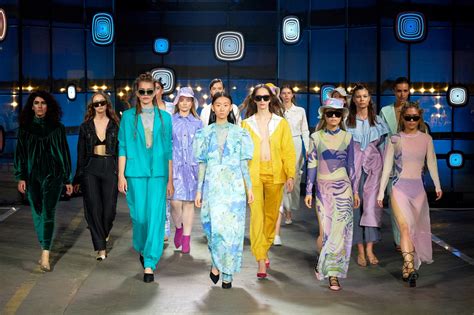Fashion design is an ever-evolving industry that continues to shape and define our sense of style. From the early days of dressmaking to the modern world of haute couture and ready-to-wear collections, the evolution of fashion design has been nothing short of remarkable. In this blog post, we will take an in-depth look into the world of fashion design, exploring the crucial role of fashion designers in the industry and the key skills and qualities required for success in this field. We will also delve into various specializations within fashion design, the process of conceptualizing and creating fashion designs, and the significance of staying abreast of fashion trends. Furthermore, we will examine the intersection of technology with fashion design, the collaborative efforts between designers and retailers, and the influential role that fashion designers play as trendsetters. Lastly, we will address the growing importance of sustainability and ethical considerations in fashion design, shedding light on the industry’s shift towards a more responsible and conscientious approach. Join us as we embark on this enlightening journey through the multifaceted world of fashion design.
Table of Contents
Evolution of Fashion Design
Fashion design has come a long way since its early beginnings. In the early days, fashion was primarily dictated by the ruling class and the wealthy elite, with designs and trends trickling down to the masses over time. However, as the world has become more connected and globalized, fashion has evolved to be more inclusive and diverse, with influences from all over the world shaping the industry.
With the advent of technology, the evolution of fashion design has been propelled even further. The use of 3D printing, virtual reality, and artificial intelligence has revolutionized the way fashion is conceived and produced. It has also opened up new avenues for creativity and innovation, allowing designers to push the boundaries of traditional fashion design.
Moreover, the evolution of fashion design has also seen a shift towards sustainability and ethical considerations. With growing concerns about the environmental impact of the fashion industry, designers are now incorporating sustainable materials and production methods into their designs, paving the way for a more eco-friendly future.
Overall, the evolution of fashion design has been marked by a continuous drive for inclusivity, technological advancement, and sustainability, making it an exciting and ever-changing industry to be a part of.
Role of Fashion Designers in the Industry
Fashion designers play a crucial role in the fashion industry, shaping the way we dress and express ourselves. They are the creative minds behind the clothes, accessories, and footwear that we see on the runways, in stores, and on the streets. With their innovative designs and trend-setting abilities, fashion designers have the power to influence and inspire the way people dress and present themselves to the world.
One of the key roles of fashion designers is to stay ahead of trends and anticipate the needs and desires of consumers. They constantly research and analyze market trends, consumer behavior, and cultural influences to create designs that are not only visually appealing but also cater to the demands of the target audience. This requires a keen eye for detail, a deep understanding of aesthetics, and the ability to predict and interpret fashion trends.
Additionally, fashion designers are responsible for bringing their creative visions to life by working closely with patternmakers, seamstresses, and other skilled professionals in the industry. They oversee the entire design process, from conceptualization and sketching to fabric selection and final production. This requires strong leadership and communication skills to effectively collaborate with a team and ensure that their designs are executed in line with their creative vision.
Furthermore, fashion designers also play a crucial role in setting industry standards and pushing boundaries in terms of innovation and creativity. Through their designs, they have the power to challenge societal norms, promote diversity and inclusivity, and drive positive change within the industry. Whether it’s through sustainable fashion, gender-neutral clothing, or body-positive representations, fashion designers have the ability to shape the cultural and social landscape of the fashion industry.
Key Skills and Qualities of Fashion Designers
Attention to detail is essential in the field of fashion design. Fashion designers must have the ability to notice even the minutest details in their work, from the stitching on a garment to the choice of fabric. This level of meticulousness ensures that the final product is of high quality and meets the standards expected in the industry.
Creativity is another key skill that every fashion designer must possess. The ability to think outside the box and come up with unique and innovative designs is what sets successful designers apart. Whether it’s creating a new silhouette, experimenting with unconventional materials, or incorporating unexpected elements into their designs, creativity is at the heart of fashion design.
Strong communication skills are also critical for fashion designers to effectively convey their ideas and collaborate with others in the industry. From pitching a design concept to a potential client to working closely with patternmakers and seamstresses, clear and concise communication is key to bringing a designer’s vision to life.
Lastly, flexibility and adaptability are qualities that are highly valued in the fast-paced world of fashion design. Designers must be able to pivot and adjust their designs to meet changing trends, client preferences, and production constraints, all while staying true to their creative vision.
Exploring Different Fashion Design Specializations
When it comes to the world of fashion design, there are a variety of specializations that designers can pursue. One of the most common specializations is in apparel design, which involves creating clothing and accessories for different markets and occasions. Designers in this specialization must stay up to date with current trends and possess a strong understanding of textiles and construction.
Another popular specialization is in footwear design, where designers focus on creating stylish and functional shoes for various demographics. This specialization requires a deep understanding of ergonomics, materials, and manufacturing processes to create the perfect pair of shoes.
Textile design is yet another important specialization in the fashion industry, involving the creation of patterns and designs for fabrics used in clothing and home goods. This specialization requires a keen eye for color and pattern, as well as an understanding of different printing and dyeing techniques.
Finally, there is the specialization of accessory design, which involves creating jewelry, handbags, and other embellishments to complement outfits. These designers must have a strong sense of style and be able to conceptualize and create original and unique accessories.
Process of Conceptualizing and Creating Fashion Designs
When it comes to the process of conceptualizing and creating fashion designs, there are several essential steps that every fashion designer must follow. The first step is to gather inspiration, which can come from a variety of sources such as nature, art, culture, or even personal experiences. Once inspiration has been collected, the designer moves on to the research phase, where they study different fabrics, trends, and historical fashion movements to inform their designs.
After the research is complete, the designer begins to sketch their ideas, using their creativity and technical skills to bring their vision to life on paper. This stage involves creating detailed drawings and illustrations that will serve as the foundation for the final product. Once the sketches are finalized, the designer moves on to the pattern-making process, where they create the blueprint for how the garment will be constructed.
With the patterns in place, the designer selects the appropriate fabrics and materials, considering factors such as texture, color, and drape. This step is crucial in bringing their vision to reality, as the choice of fabric can greatly impact the final look and feel of the design. Following the selection of materials, the designer moves on to the actual construction of the garment, where they work closely with skilled seamstresses and tailors to ensure that every stitch and detail is executed to perfection.
Lastly, the designer focuses on the finishing touches, which may include embellishments, hardware, or other decorative elements. This stage is where the design truly comes to life, as the designer adds their personal flair and style to the garment. Once the final piece is completed, it is ready to be showcased to the world, whether on the runway, in a retail store, or through other fashion platforms.
Importance of Fashion Trends in Designing
In the fast-paced world of fashion design, staying ahead of the latest fashion trends is crucial for success. The ever-changing landscape of style, color, and silhouette dictates the direction of new designs and influences the choices made by fashion designers when creating their collections. Keeping a finger on the pulse of what’s hot and what’s not allows designers to anticipate the desires of their target market and stay relevant in the competitive industry.
Moreover, the importance of fashion trends in designing extends beyond individual designers and brands. Trends can shape the entire fashion ecosystem, from manufacturing and retail to marketing and media. Understanding and incorporating these trends into designs can have a direct impact on a designer’s commercial success and brand reputation.
Harnessing the power of fashion trends also allows designers to express their creativity within the context of contemporary culture. By drawing inspiration from current trends, designers can produce collections that resonate with consumers on a deeper level. This connection can lead to increased consumer loyalty and a loyal following for the brand.
In essence, the importance of fashion trends in designing cannot be overstated. It serves as a roadmap for designers, enabling them to navigate the ever-changing landscape of fashion and connect with their target audience in a meaningful way.
Merging Technology with Fashion Design
Merging Technology with Fashion Design
Technology has become an integral part of the fashion industry, revolutionizing the way designs are created, produced, and marketed. Fashion designers have embraced various technological advancements to enhance their creativity and efficiency, ultimately reshaping the landscape of the industry.
One of the key ways in which technology has merged with fashion design is through the use of 3D printing. This innovative technology allows designers to bring their conceptual designs to life in a much more efficient and precise manner. It enables them to create intricate patterns and structures that were previously impossible to achieve with traditional methods.
Furthermore, the rise of virtual reality (VR) and augmented reality (AR) has significantly impacted the fashion design process. VR and AR technologies have enabled designers to visualize their creations in a virtual space, providing them with a better understanding of how the designs will look and feel in real life. This not only enhances the design process but also improves the overall consumer experience.
In addition, the integration of technology in fashion design has led to the development of smart textiles and wearable technology. These innovations have allowed designers to incorporate functionality and interactivity into their designs, blurring the lines between fashion and technology. From garments with integrated sensors to fabrics that change color or adapt to different environmental conditions, technology has opened up a new realm of possibilities for fashion designers.
Collaborations between Fashion Designers and Retailers
In the fast-paced world of fashion, collaborations between fashion designers and retailers have become increasingly prevalent. These partnerships offer a unique opportunity for both parties to leverage their strengths and create innovative, marketable products that resonate with consumers. By joining forces, designers and retailers can expand their reach, capture new markets, and stay ahead of the ever-changing fashion landscape.
One of the key benefits of collaborations between fashion designers and retailers is the potential for creative synergy. Designers bring their artistic vision and expertise in garment construction, while retailers offer insights into consumer preferences, market trends, and distribution channels. This fusion of creativity and commerce often results in exclusive collections that are not only aesthetically appealing but also commercially viable.
Moreover, collaborations allow designers to gain exposure to a wider audience and build brand equity. By partnering with established retailers, designers can showcase their work to a broader customer base, ultimately increasing brand visibility and recognition. On the other hand, retailers can leverage the credibility and allure of partnering with high-profile designers to attract customers and strengthen their brand positioning.
Ultimately, collaborations between fashion designers and retailers are a testament to the power of collective creativity and strategic partnerships. By working together, both parties can elevate their offerings, engage consumers in new ways, and set themselves apart in a competitive market.
Fashion Designers as Influencers and Trendsetters
Fashion designers play a crucial role in the industry by not only creating innovative and trendsetting designs but also by influencing the fashion choices of the masses. They have the ability to set new trends, inspire people, and shape the way individuals perceive and embrace fashion.
Being influencers and trendsetters, fashion designers have the power to introduce new styles and ideas that can change the direction of the fashion industry. Their creations are often showcased in high-profile events, fashion shows, and editorials, which can significantly impact and dictate the latest fashion trends.
Through their work, designers can also influence the way people express themselves through fashion, encouraging individuals to step out of their comfort zones and embrace unique and bold styles. Their influence goes beyond the runway, as their designs are often seen on celebrities, social media influencers, and fashion enthusiasts, further solidifying their impact on shaping the fashion landscape.
Overall, fashion designers are not only skilled creators but also influential figures who have the power to shape and redefine the fashion industry, making them key players in influencing and setting trends that resonate with a diverse audience.
Sustainability and Ethical Considerations in Fashion Design
In the contemporary world, sustainability and ethical considerations have become increasingly important in the field of fashion design. As consumer awareness grows, there is a growing demand for environmentally conscious and socially responsible design practices. The fashion industry has come under scrutiny for its impact on the environment and labor practices, prompting designers to rethink their approach to creating and producing clothing.
One of the key aspects of sustainable fashion design is the use of environmentally friendly materials and production processes. This includes utilizing organic fabrics, natural dyes, and employing ethical labor practices throughout the supply chain. Designers are also exploring upcycling and recycling as a way to reduce waste and promote circularity in the fashion industry.
In addition to environmentally sustainable practices, ethical considerations also play a crucial role in fashion design. This involves ensuring fair wages and safe working conditions for garment workers, as well as promoting diversity and inclusivity in the industry. Designers are increasingly embracing fair trade and artisanal approaches to production, supporting local communities and traditional craftsmanship.
Overall, the integration of sustainability and ethical considerations in fashion design not only aligns with consumer values, but also promotes a more responsible and conscious approach to creating clothing. By prioritizing environmental and social impact, designers can contribute to a more holistic and progressive fashion industry that takes into account the well-being of both people and the planet.






